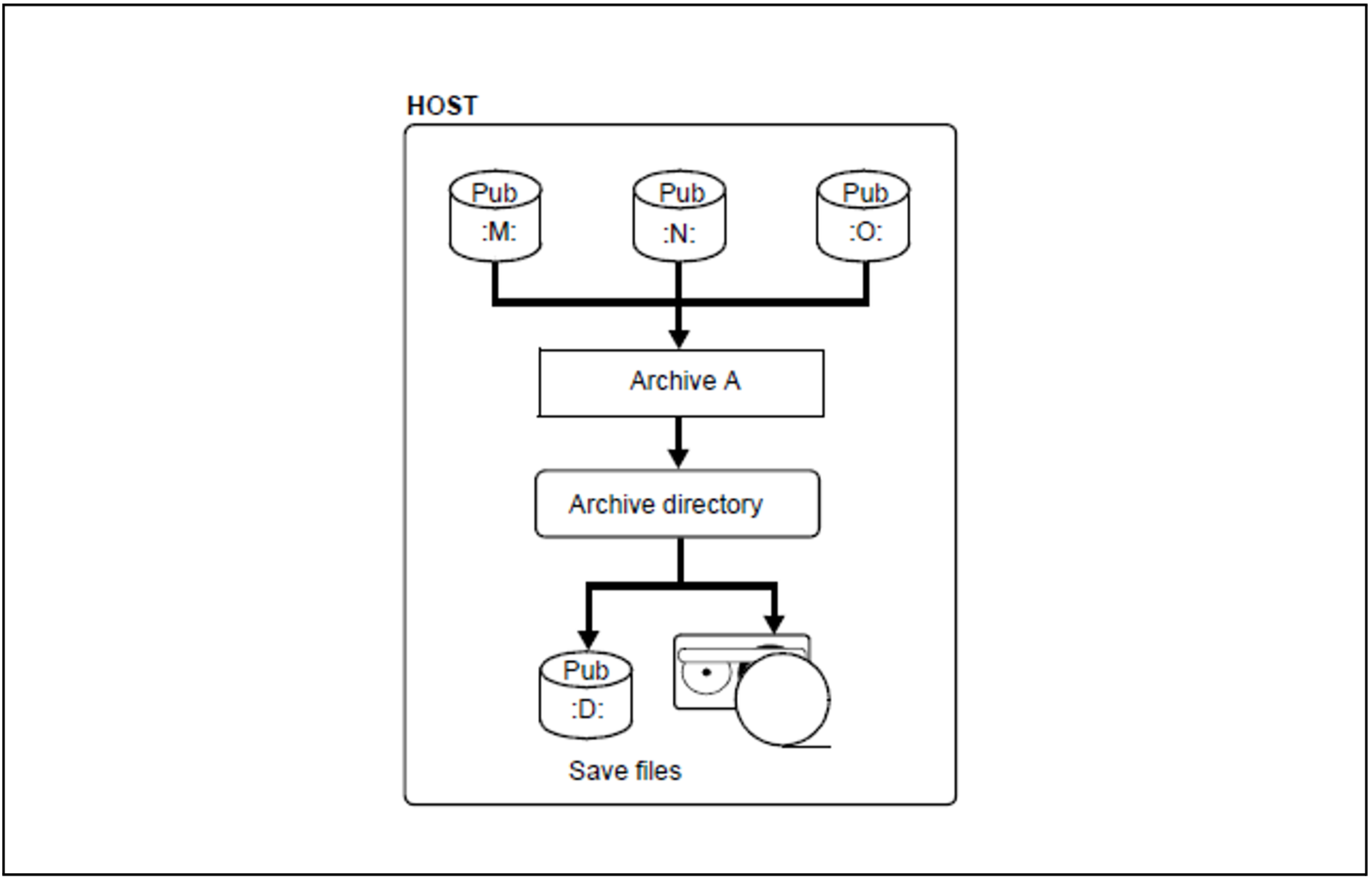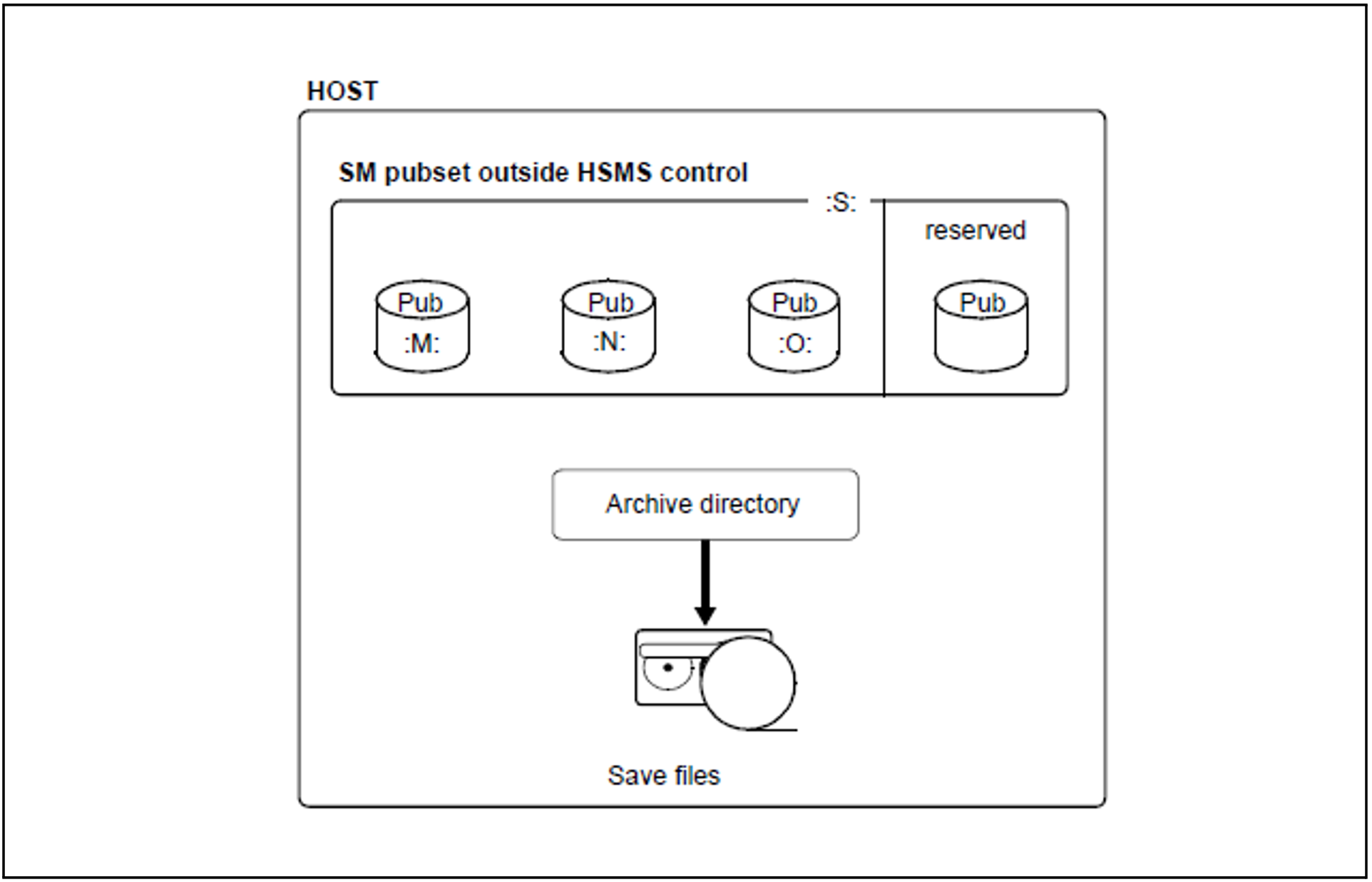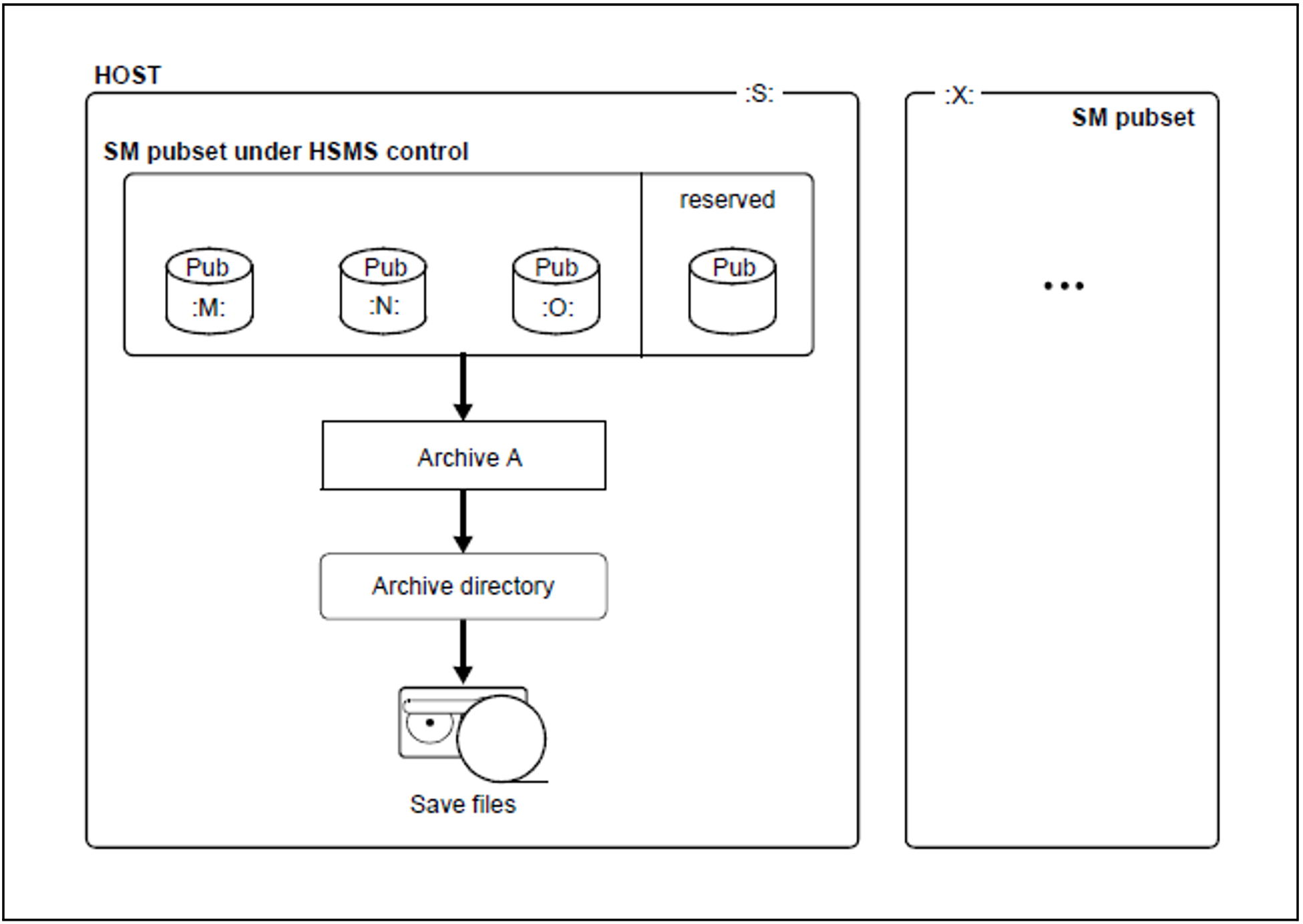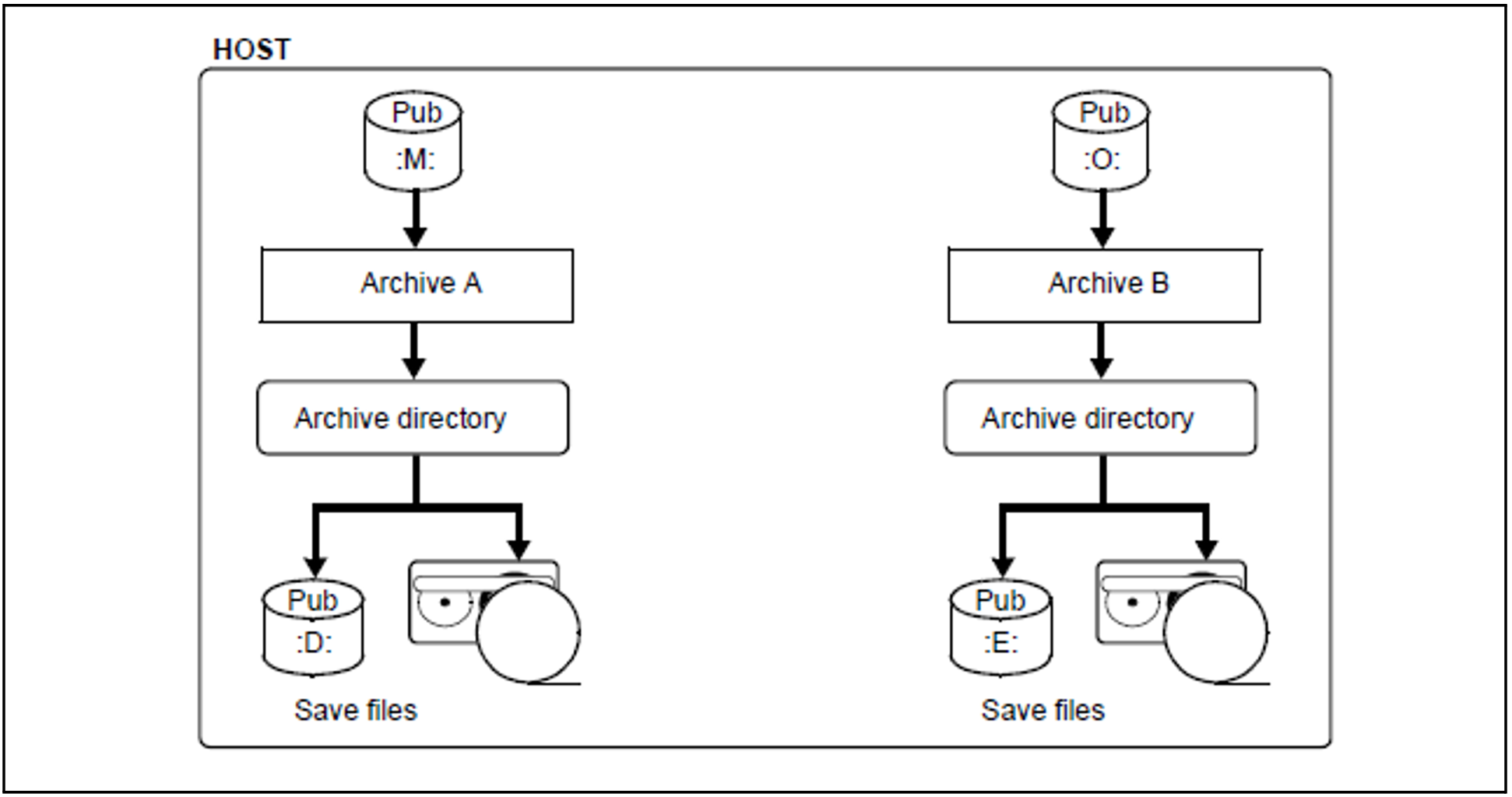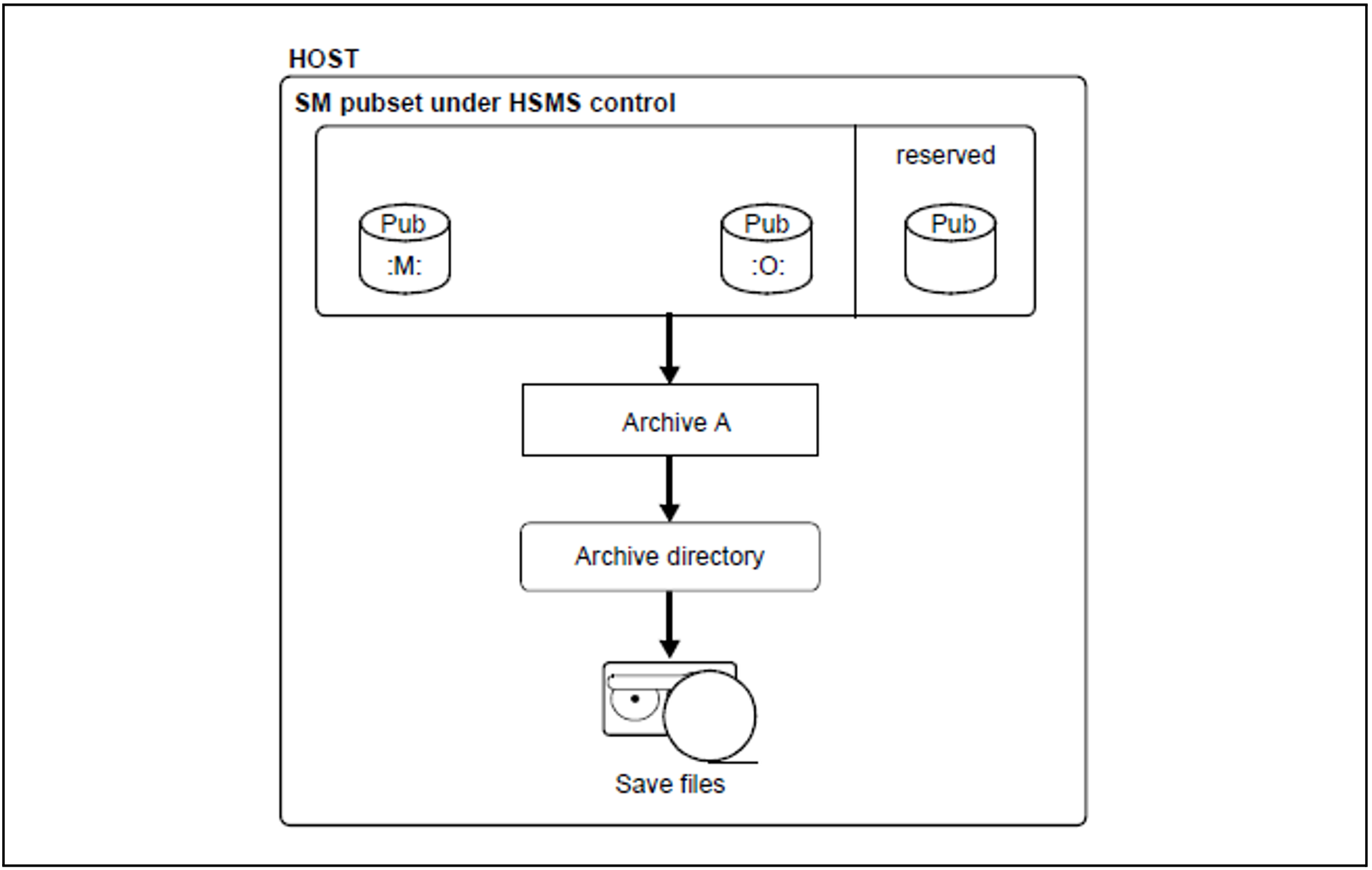Existing archives are to be used as default archives for an SM pubset under HSMS control. All of the pubsets that use these archives are to be included in this SM pubset.
When creating archives (public or private) for backup or migration in an SM pubset environment, HSMS checks whether the specified archive directories contain file or job variable records for that SM pubset only. Long-term archives are not checked because they do not reside locally on an SM pubset.
The diagram below shows a typical standard use of archives by pubsets. Here, a single archive is used exclusively by pubsets M, N and O:
After conversion of pubsets M, N and O to an SM pubset (with DMS statements), the archive definitions can no longer be used because HSMS cannot be used with an SM pubset which is outside HSMS control.
The archive definition is still located in the host environment. It must be deleted before the SM pubset is declared for HSMS. The diagram below illustrates this.
A pubset must be empty so that it can be declared as the S1 volume set of an SM pubset. Save files located on disks cannot therefore be used (S1 level). Before an existing default migration archive can be used, the HSMS administrator must migrate the save files from S1 to S2 before the SM pubset is created. This is done with the following statement:
//MIGRATE-FILES FROM-STORAGE=*S1-STORAGE-LEVEL(..., - TO-STORAGE=*S2-STORAGE-LEVEL)
For backup archives, the HSMS statement COPY-SAVE-FILE must be used before the conversion.
The SM pubset is placed under HSMS control with the following statement:
//CREATE-SM-PUBSET-PARAMETERS SM-PUBSET-ID=S,SYSMIGRATE=*UNDEFINED
Existing archive directories can be specified with the HSMS statement MODIFY-SM-PUBSET-PARAMETERS so that they can be used within the converted SM pubset. For this, the following conditions must be met:
The archive directory must be located within the SM pubset. It may only refer to files and job variables located on the SM pubset.
The save files must be located in the SM pubset on the S2 level. All volumes (magnetic tape cartridges) must be in the pool of the archive directory.
The migration to S1 is only possible after the conversion.
The archive directory must not be used in another archive of another environment.
The diagram below shows how an existing archive is used after conversion of the SM pubset.
Example
/START-DIRCONV ... //CREATE-ARCHIVE ARCHIVE-NAME=A,DIRECTORY-NAME=D(NEW-DIR=*NO), - // ENVIRONMENT=*SYSTEM-MANAGED(CAT-ID=*NO) //MODIFY-SM-PUBSET-PARAMETERS SM-PUBSET-ID=S,SYSMIGRATE=A
If archive directory D was previously used by an archive defined in the host’s control file, it must first be deleted.
The same operation can be performed for long-term and backup archives.
Converting/integrating archive directories
When an archive directory is used for an SM pubset, HSMS checks whether all of the file and job variable records refer to the catalog ID of that SM pubset only. If not, the archive directory must be converted by renaming the catalog ID in all of the file and job variable records of the archive directory.
In the diagram below, two pubsets are included in one SM pubset. These pubsets can have no system archive or their own system archive (not shareable or shareable with pubsets included in the same SM pubset) for backup and migration.
The HSMS administrator is responsible for ensuring that the archive definitions and the old archive directories are deleted. HSMS automatically updates the MAREN catalog.
The DIRCONV tool is used to convert one or more archive directories to a new archive directory with a specified catalog ID and integrate them in all file and job variable records. Should a name conflict occur, the process is halted and an error message output. Each problem must then be solved individually.
If the SM pubset was created from numerous SF pubsets with shared archive directories, the statements, RENAME-CATID and UPDATE-VOLUME-CATALOG in DIRCONV must be used. This is only necessary when the new archive directory has a different name to the already existing one.
If the SM pubset was created from numerous SF pubsets, all of which had different directories, then the statements MERGE-DIRECTORIES, RENAME-CATID and UPDATE-VOLUME-CATALOG must be used in DIRCONV.

